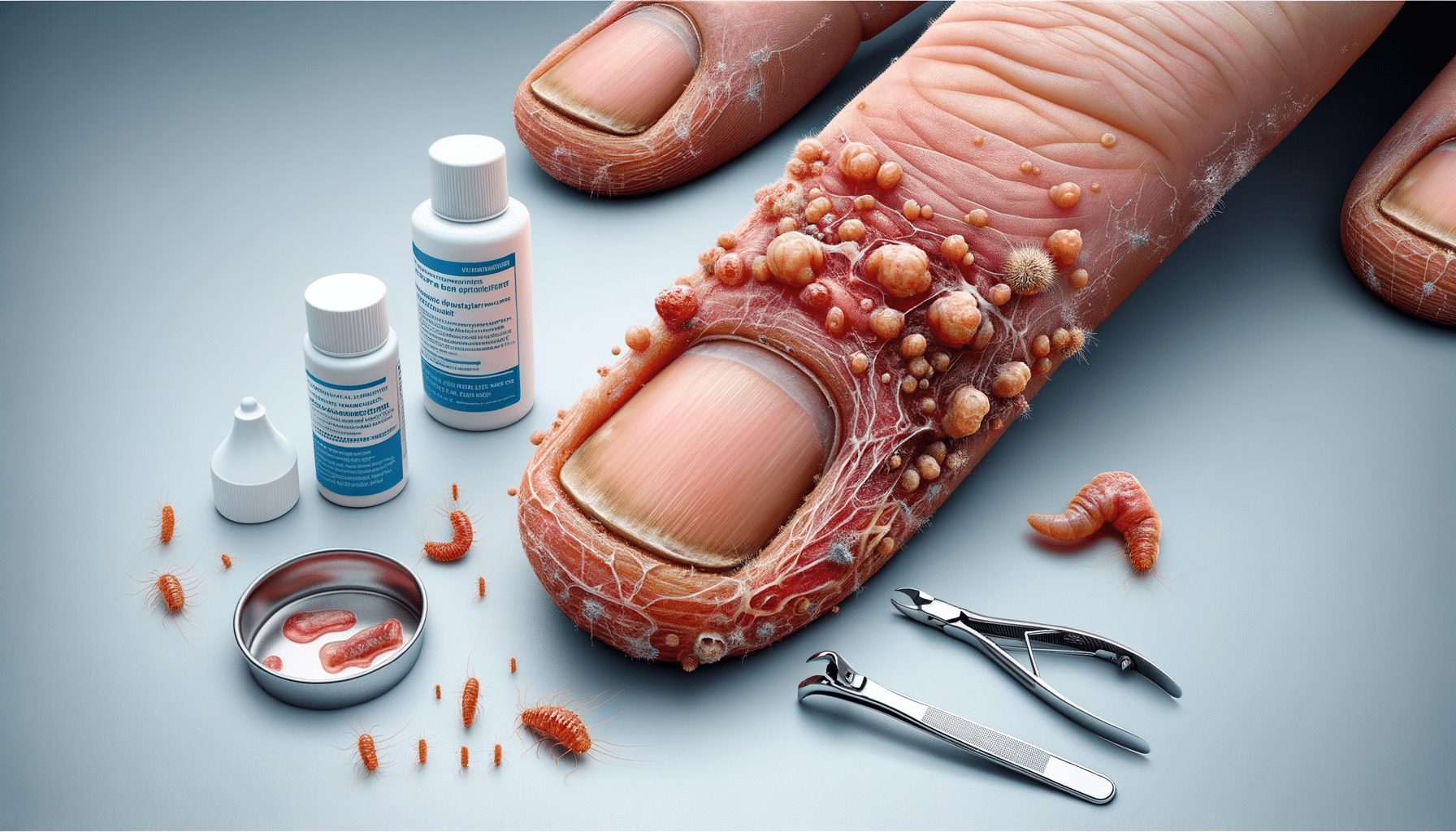
Introduction to Nail Fungus and Its Prevalence
Nail fungus, medically known as onychomycosis, is a common condition affecting millions worldwide. It is characterized by a change in the appearance of nails, often causing them to become discolored, thickened, and brittle. While it might seem like a minor ailment, nail fungus can lead to discomfort and even pain if left untreated. Understanding the common mistakes that worsen this condition is crucial for effective management and prevention.
Nail fungus thrives in warm, moist environments, making it prevalent among individuals who frequent public swimming pools, gyms, and shower rooms. The condition is not only a cosmetic concern but can also impact one’s overall foot health. As such, awareness and education about nail fungus are essential to minimize its spread and severity.
The Common Mistake: Ignoring Early Signs
One of the most frequent mistakes people make with nail fungus is ignoring the early signs. Many individuals dismiss slight discoloration or thickening of the nails as a minor issue, not realizing that these are the initial indicators of a fungal infection. Early intervention is key to preventing the condition from worsening and spreading to other nails or even to other individuals.
Ignoring these early symptoms allows the fungus to grow and penetrate deeper into the nail bed, making it more challenging to treat. Moreover, as the infection progresses, it can cause the nail to separate from the nail bed, leading to pain and possible secondary bacterial infections.
- Discoloration: A yellow or white spot under the tip of the nail.
- Thickening: Nails may become unusually thick and difficult to trim.
- Crumbly edges: The edges of the nails may become brittle and break easily.
Recognizing and addressing these signs promptly can significantly improve treatment outcomes and prevent further complications.
Expert Tips for Preventing Nail Fungus
Prevention plays a vital role in managing nail fungus. Experts recommend several strategies to minimize the risk of developing this condition. Maintaining good foot hygiene is the cornerstone of prevention. Regularly washing and thoroughly drying feet, especially between the toes, can help reduce the likelihood of fungal growth.
Additionally, wearing breathable footwear and moisture-wicking socks can prevent the warm, damp environment that fungi love. It’s also advisable to avoid walking barefoot in communal areas such as locker rooms and public showers. Using antifungal sprays or powders in shoes can provide an extra layer of protection.
- Keep nails trimmed and clean to reduce the surface area for fungal growth.
- Choose nail salons that adhere to strict sanitation practices to avoid cross-contamination.
- Consider using antifungal nail polish or treatment if you’re prone to infections.
By incorporating these preventive measures into daily routines, individuals can significantly reduce their risk of developing nail fungus.
Treatment Options for Nail Fungus
Once nail fungus is diagnosed, several treatment options are available. Over-the-counter antifungal creams and ointments are commonly used for mild cases. These topical treatments can be effective if applied consistently and as directed. However, for more severe infections, prescription medications may be necessary.
Oral antifungal drugs, such as terbinafine and itraconazole, are often prescribed for more stubborn cases. These medications help clear the infection by promoting the growth of new, healthy nails. It’s important to note that oral treatments can take several months to show results and may have side effects, so they should be used under medical supervision.
- Topical treatments: Effective for mild infections, requiring regular application.
- Oral medications: Suitable for severe infections, with a longer duration of treatment.
- Laser therapy: A newer option that targets the fungus directly with minimal side effects.
Consulting a healthcare professional is crucial for determining the most appropriate treatment plan based on the severity of the infection.
Conclusion: Taking Proactive Steps Against Nail Fungus
In conclusion, understanding the common mistake of ignoring early signs of nail fungus is essential for effective management and prevention. By recognizing the symptoms and taking proactive steps, individuals can prevent the condition from worsening and spreading. Adopting good hygiene practices, utilizing preventive measures, and seeking timely treatment can significantly improve outcomes and maintain healthy nails.
Whether you’re dealing with a mild infection or seeking to prevent future occurrences, being informed and vigilant is key. With the right approach, nail fungus can be managed effectively, allowing individuals to enjoy healthy and beautiful nails.